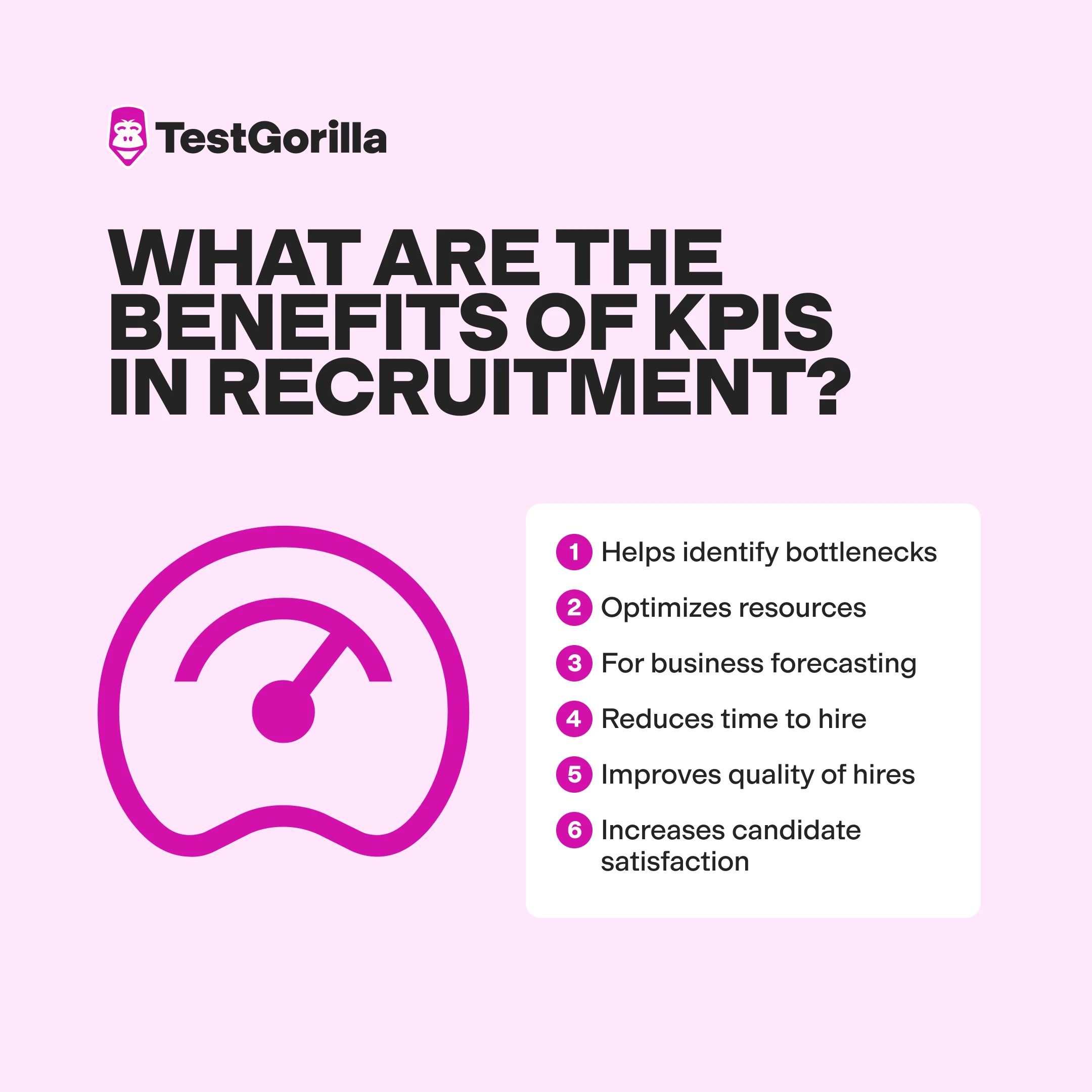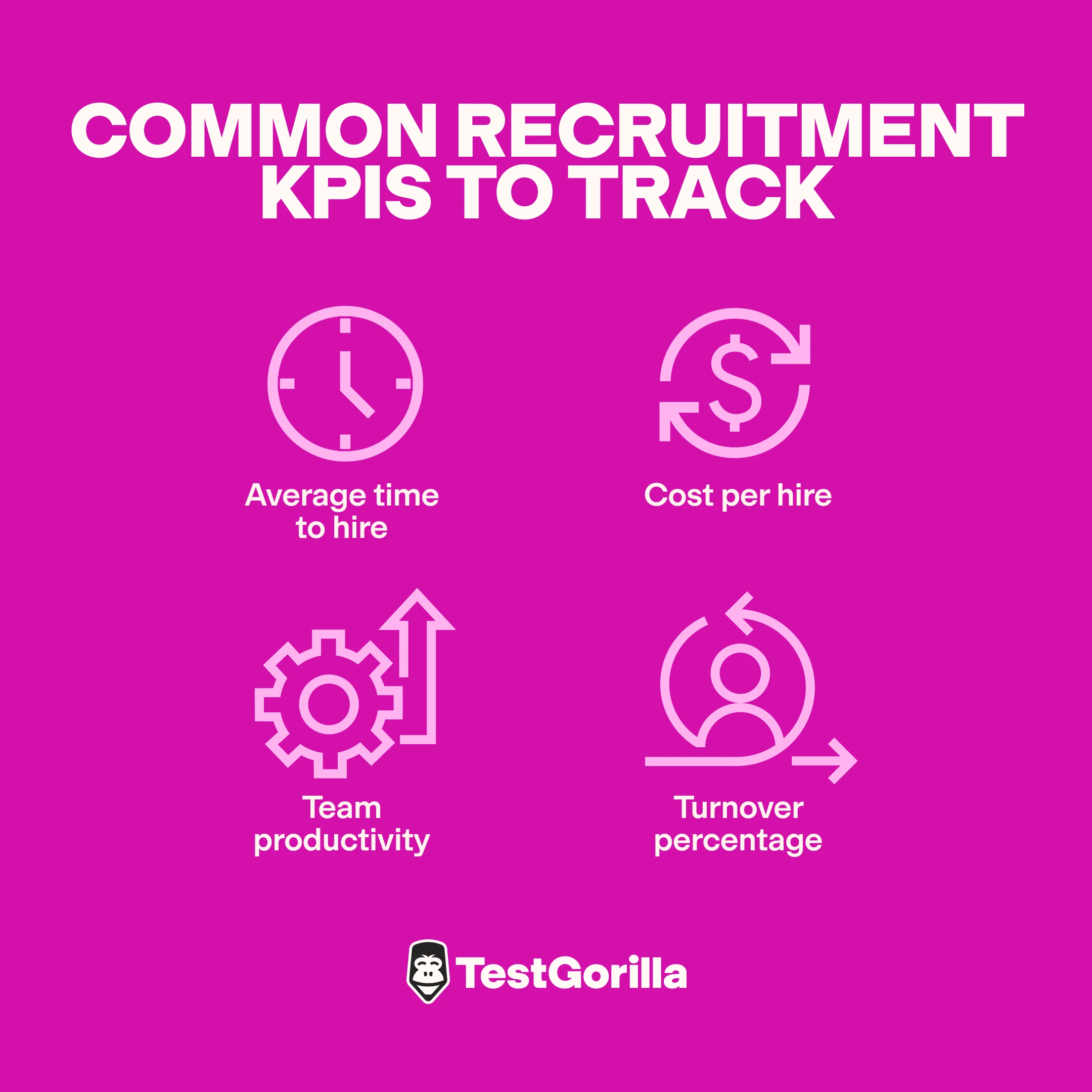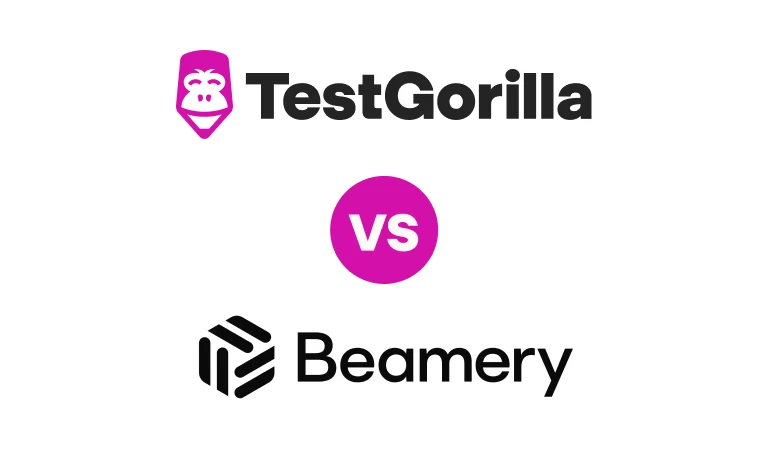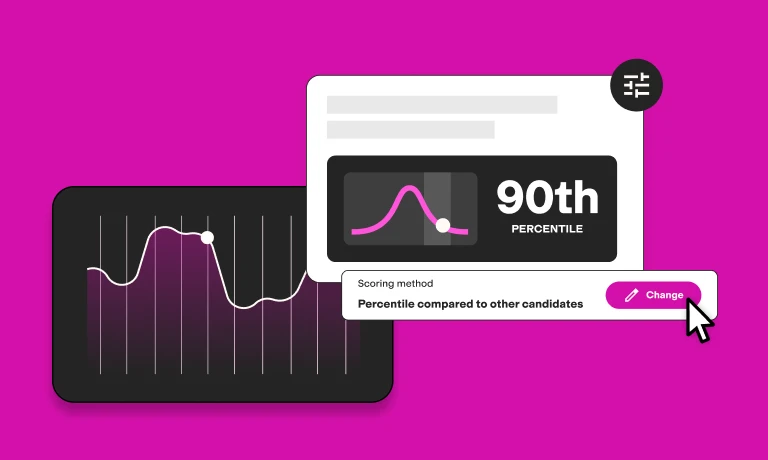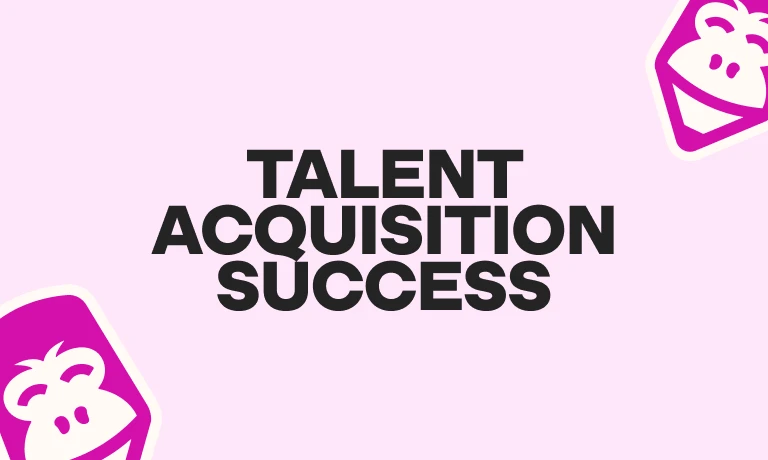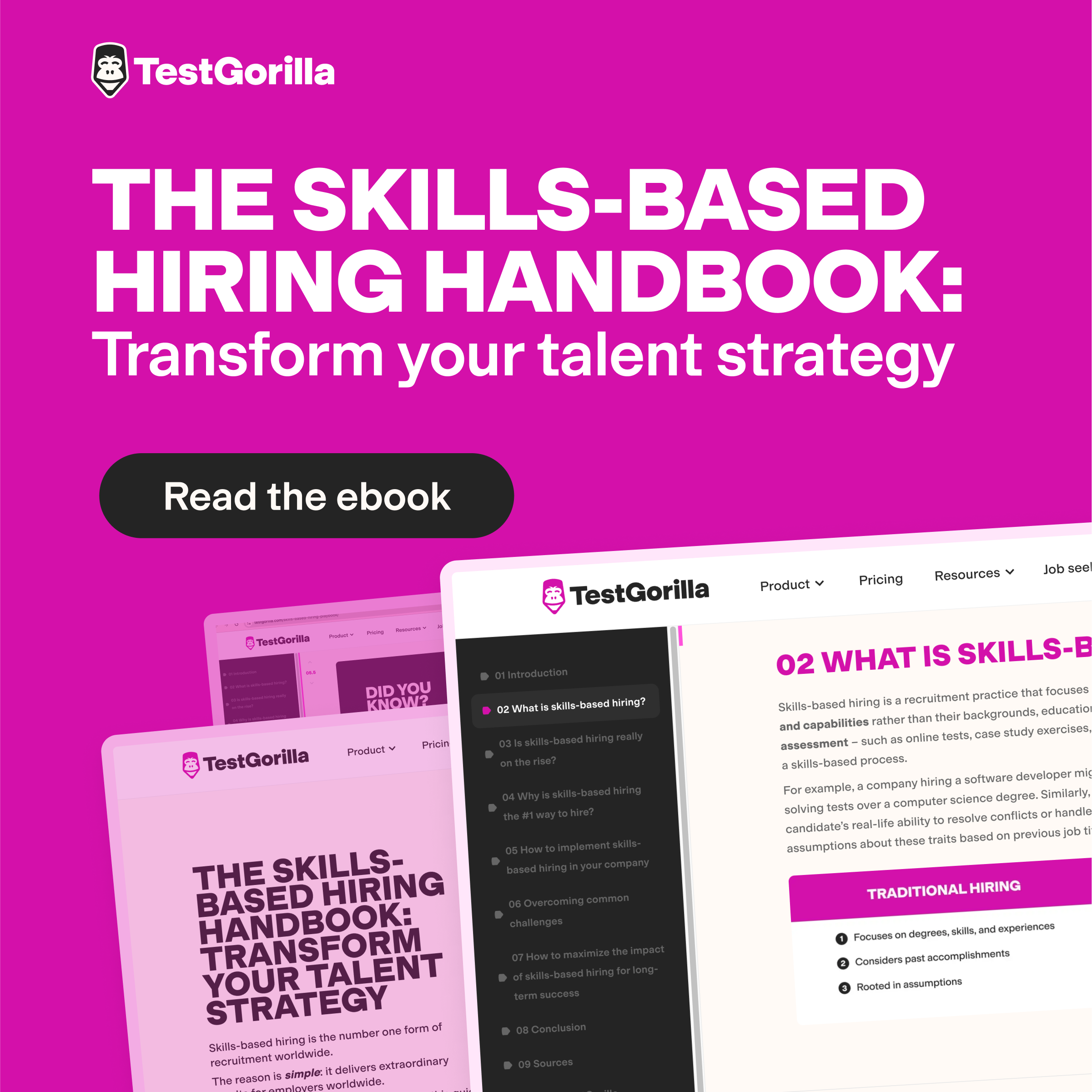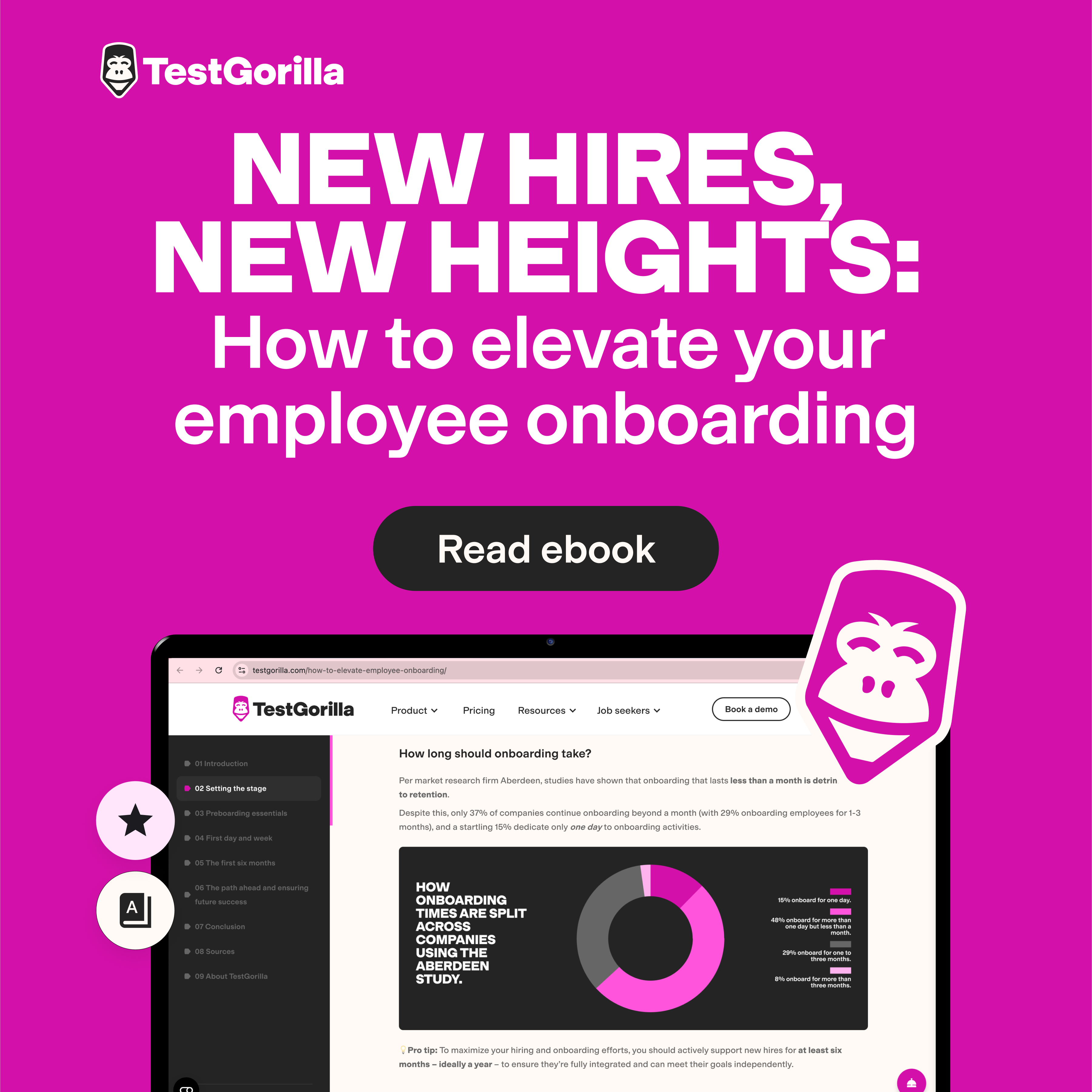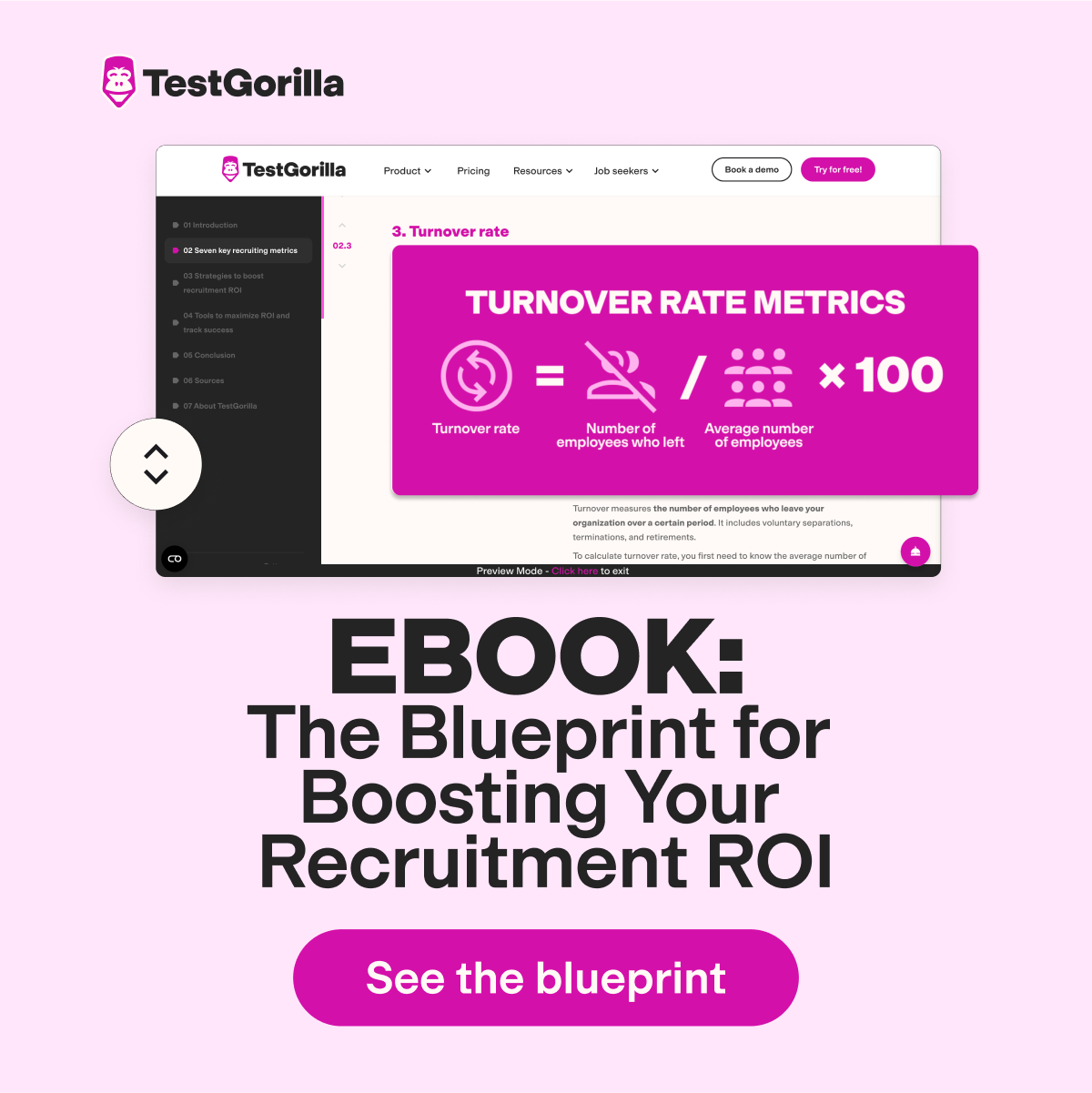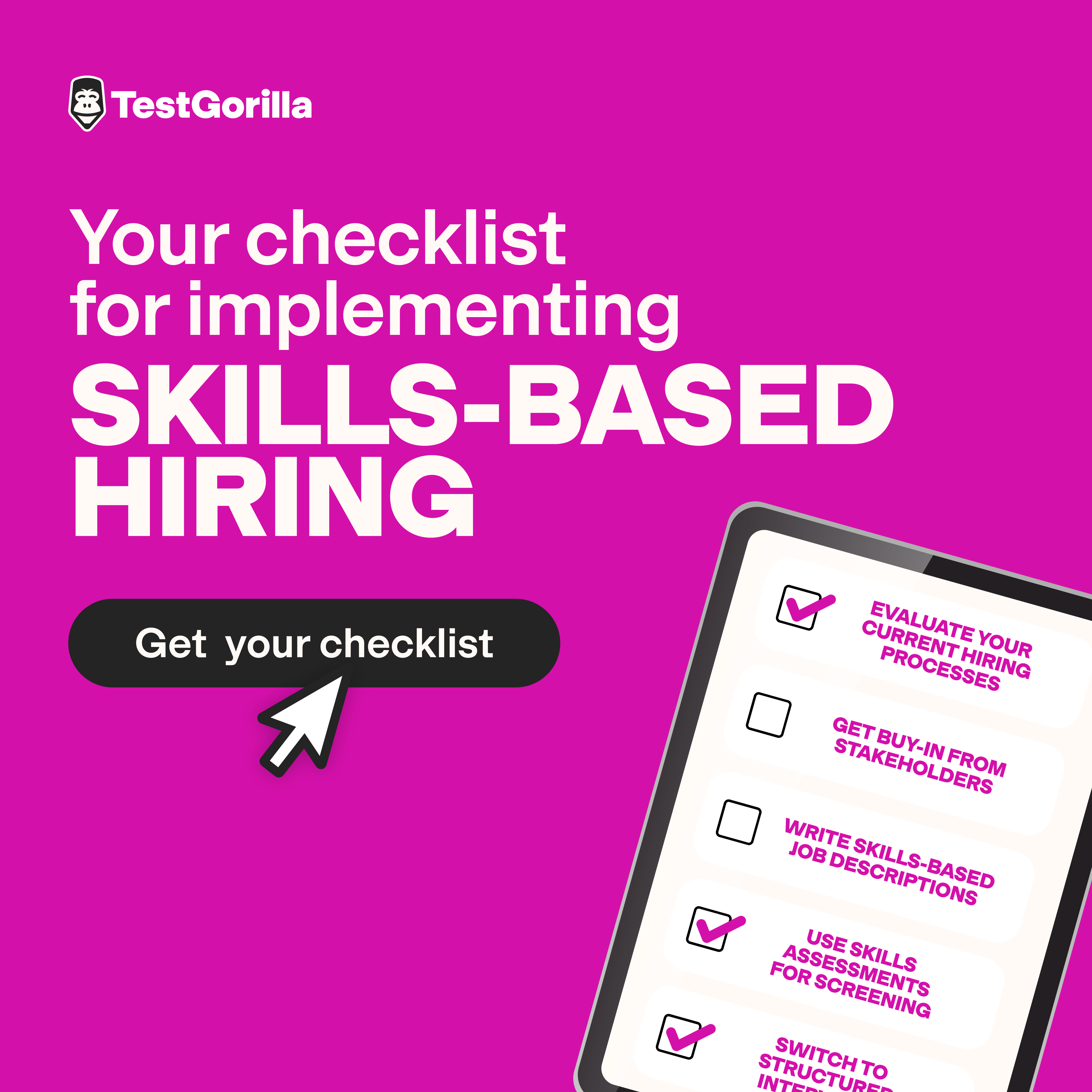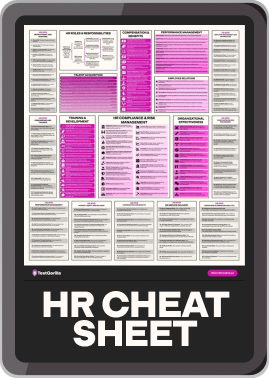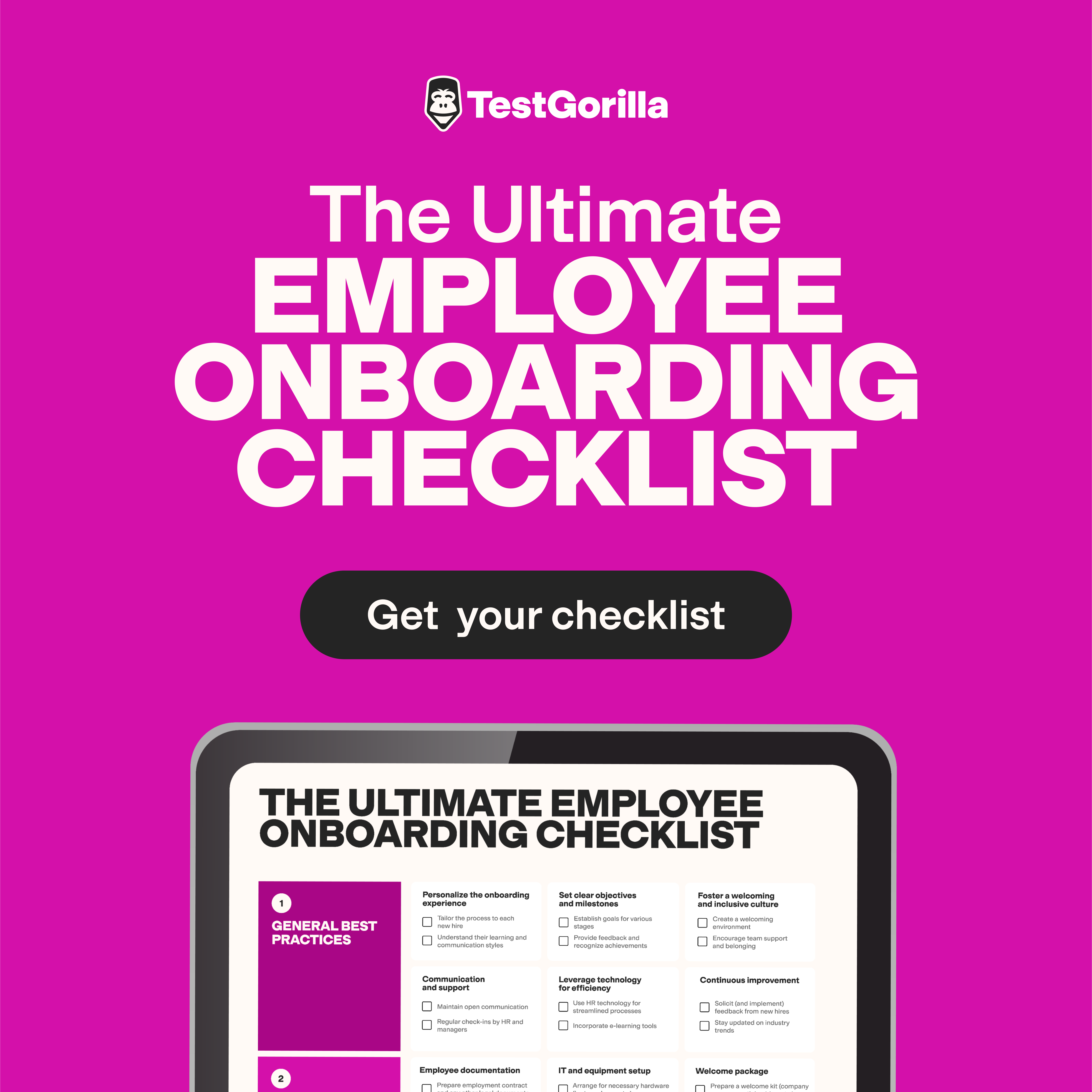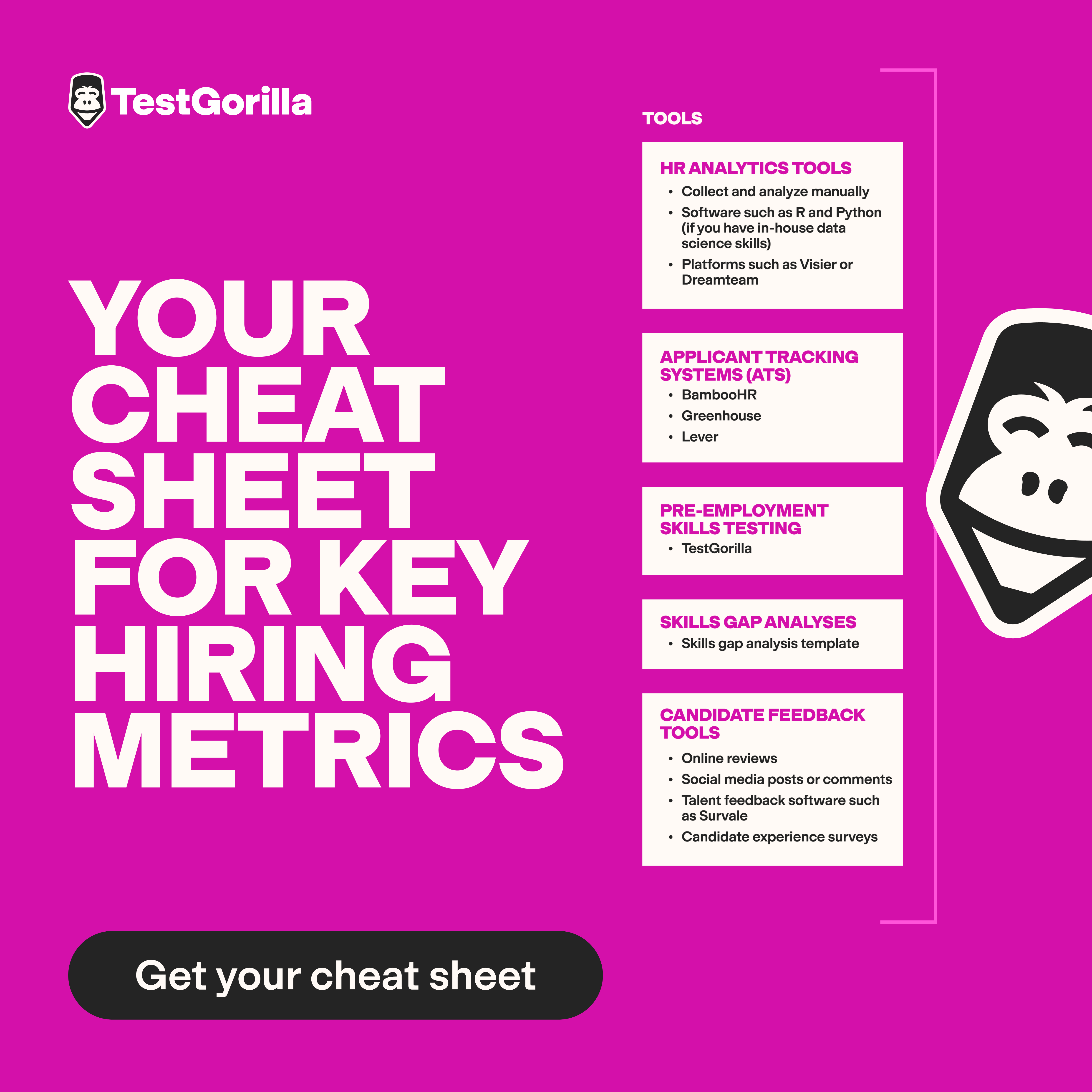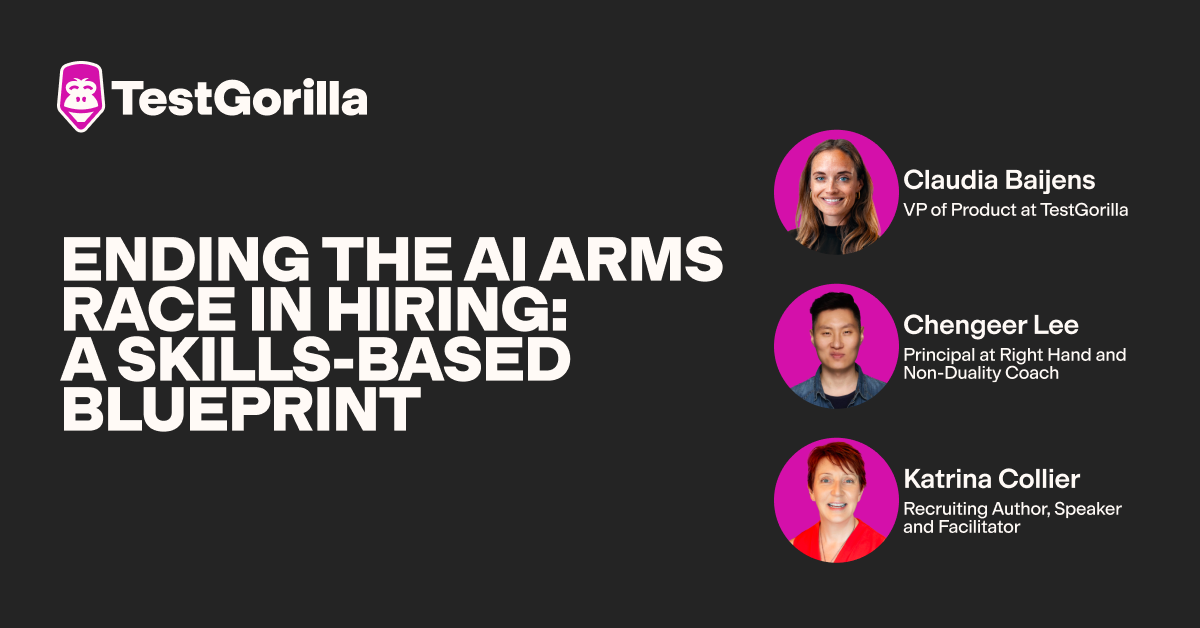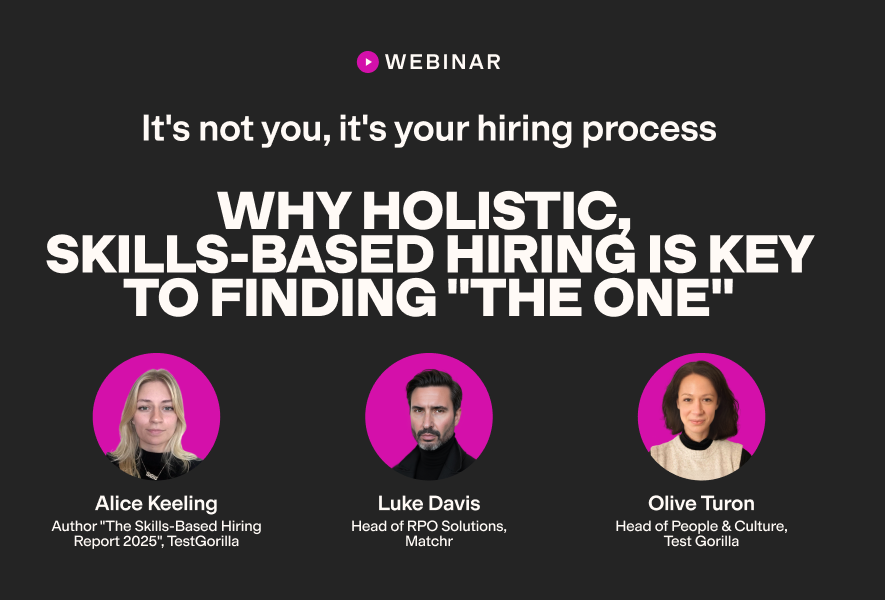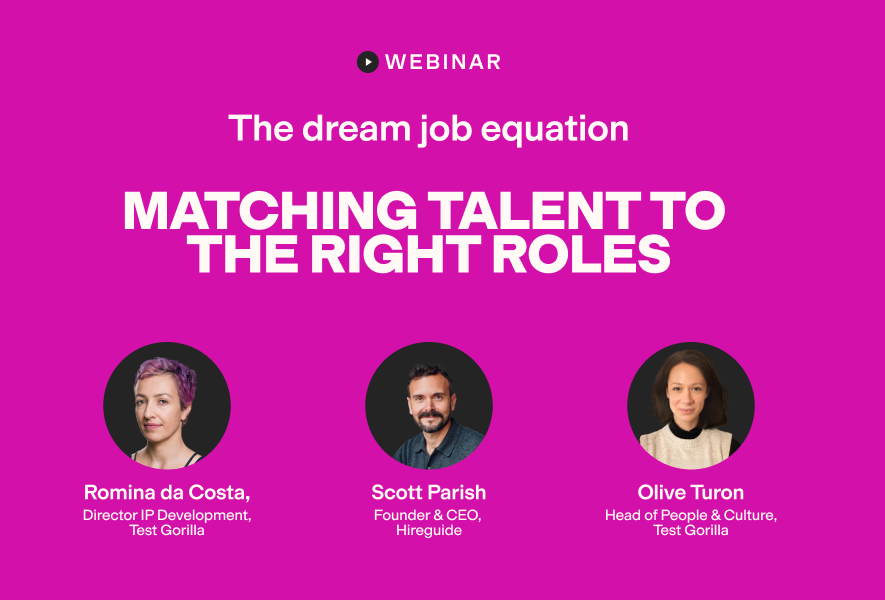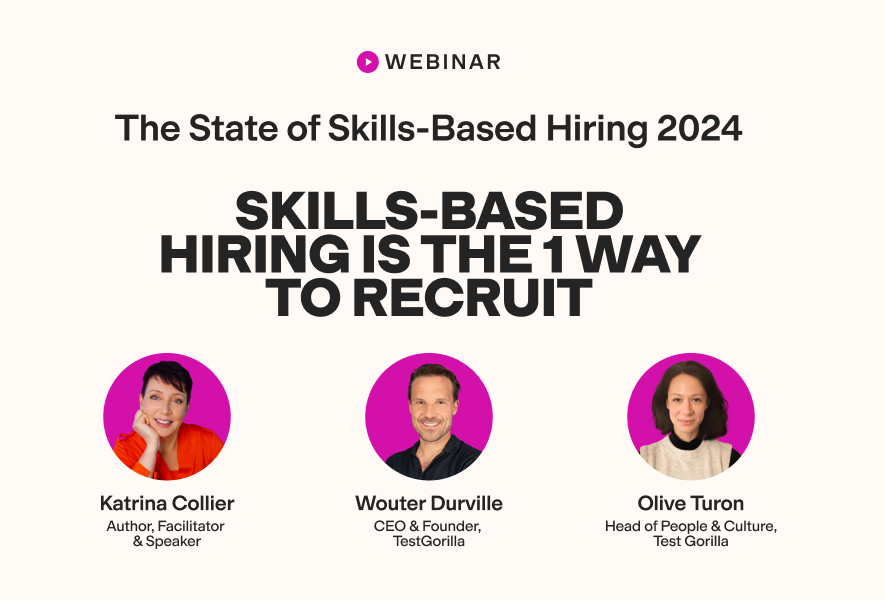Key Performance Indicators (KPIs) are quantifiable metrics that help you measure your progress toward specific business goals and strategic objectives. Think of them as the mini aims you can set for your team to help them reach organizational targets. For example, time to hire, turnover percentage per quarter, and annual employee engagement scores are all important HR KPIs.
KPIs usually have an X-per-Y relationship, where X is a metric, and Y is a timeframe or category. For example, if you worked in a retail store, a KPI could be sales per transaction. Keeping a high average transaction value means you’re maximizing value per customer, bringing you closer to the overall sales target.
You can track your KPIs by collecting real-time data and analyzing it regularly to see how your team is performing. For example, if you set a KPI target for 60% new hire retention within six months, and your retention figure comes in at 45%, you’re not doing badly, but there’s certainly room for improvement.
Wherever possible, you should try to collect your KPI data firsthand to ensure it’s reliable. Data collection methods like employee engagement surveys, customer satisfaction forms, and time elapsed from advertisement to contract signing are a great place to start.
Why are KPIs important in recruitment?
There are many reasons why KPIs are important in a recruitment environment:
Helps identify bottlenecks. Setting KPIs along the recruitment timeline will help you locate where holdups occur and enable you to put steps in place to remedy them. For example, if the process slows at the interview stage, it may indicate that more managers should be trained in interviewing skills to speed things up.
Optimizes resources. Setting financial KPIs will help you identify what areas of your business are most profitable and which are over-resourced. For example, tracking wage budgets, comparing these to team output, and analyzing recruitment costs will allow you to redirect resources and focus on the areas that deliver value.
For business forecasting. Tracking KPI performance over time allows you to identify patterns in your recruitment, helping you better predict future performance as well as business and hiring needs. For example, if you notice a spike in applications every Spring, it may be worth allocating additional resources to the hiring team at that time.
Reduces time to hire. Time to hire is a key business metric, and tracking time-based recruitment KPIs helps you spot inefficiencies and speed up recruitment.
Improves quality of hires. There’s no point investing a ton of time in recruitment if you’re not bringing in the right people. KPIs help you measure the success of your hires through metrics like retention rates, performance, and employee engagement.
Increases candidate satisfaction. A better recruitment process leads to a better candidate experience, resulting in happier, more engaged applicants. Even if they aren’t successful this time, this positive experience will strengthen your employer brand and make them more likely to apply next time.
Teams that don’t track KPIs may find themselves making hiring decisions based on guesswork, not data. This can lead to longer hiring times, higher turnover rates, and wasted resources.
Common recruitment KPIs to track
Consider tracking the following recruitment-focused KPIs:
1. Average time to hire
Candidates need to be recruited in a timely manner, and tracking time to hire ensures your recruitment process is efficient. You can calculate the average time to hire by dividing the total working days it takes to hire for a role by the number of roles filled. For example, if it takes 55 days to fill three roles, your average time to hire is 18.33 days.
Pro tip: Try comparing the time to hire candidates vs. the time to hire skilled candidates who have been assessed through a talent discovery platform like TestGorilla. 81% of recruiters found that skills-based hiring reduces overall time to hire.
2. Cost per hire
Cost per hire is similar to your customer acquisition cost, and is the total amount spent on the recruitment campaign divided by the number of hires. This includes advertising spend, recruiter wages, background checks, recruitment tools costs, and other hiring-related expenses. This can quickly add up, and the average cost-to-hire was around $4,700 per annum in 2023.
3. Team productivity
Dividing the total cost of team wages vs. the hires made will give you the productivity of your recruitment team. If your payroll spend vs. hires made is a large number, there’s likely room to tighten up your recruitment processes. However, if your team is making a lot of hires without breaking the bank, you’re on the right track.
4. Turnover percentage
Turnover percentage is the number of employees hired divided by how many employees leave in a given time period. This is usually a year, but you can also measure turnover per quarter or half year. A high turnover rate could indicate unrealistic job adverts, poor development opportunities, a weak culture, or inadequate compensation.
The best insights on HR and recruitment, delivered to your inbox.
Biweekly updates. No spam. Unsubscribe any time.
Improve your recruitment process with a skills-based approach
Skills-based hiring is a recruitment strategy that measures a candidate's skills, abilities, and competencies instead of relying solely on their qualifications and experience. It ensures a candidate can actually do the job – not just talk about it.
There’s less focus on resumes and more on behavioral-style interview questions and skills testing. You can measure skills through coding challenges, soft skills tests, or problem-solving exercises.
Want to learn more? Discover the state of skills-based hiring and its benefits in our 2024 report.
Common skills-based hiring KPIs
Consider tracking the following KPIs when using a skills-based hiring approach:
1. Assessment completion rate
Measuring how many candidates complete their assessments shows how engaging and accessible the process is. Dividing the number of tests completed by the total number of tests issued will provide you with this. If your completion rate is low, you may have too many questions in your test. If the drop-off rate is high, it could mean the process is confusing or instructions unclear.
2. Employee satisfaction
Everyone wants to feel they’re valued and belong in their workplace. Using skills-based hiring helps place employees in a role where they genuinely thrive, enhancing employee satisfaction and boosting overall engagement. You could measure this metric through employee engagement surveys and pulse surveys.
3. Hiring manager satisfaction
As with employee satisfaction, measuring hiring manager satisfaction helps ensure that skills-based hiring is delivering the right talent. You can measure this through post-recruitment surveys and regular feedback sessions.
4. Retention of skills-based hires
Tracking the retention of skills-based hires indicates how effective your recruitment processes are. Someone who’s hired and immediately out the door possibly means they weren’t the right culture fit – a dilemma that could have been avoided with a robust recruitment process. To calculate: Divide the number of employees that stay with the company in a set timeframe (six months to a year) by the total number of hires in the same period.
How TestGorilla helps you monitor KPIs
Tracking your recruitment KPIs ensures roles are filled quickly, your recruiters are working efficiently, and you have a good idea of future hiring needs. However, tracking KPIs in a skills-based hiring campaign optimizes the quality of hires, increases hiring manager satisfaction, and can reduce the time to hire by up to 81%.
You’ll need accurate, first-hand data to make this happen, and that’s where TestGorilla comes in. TestGorilla gives you data-driven, valuable insights into assessment completion rates, pass rates, and time to hire, allowing you to analyze what’s going on with your recruitment teams.
Track, refine, and optimize with TestGorilla. Start your free plan today.
FAQs
Should KPIs be SMART?
They don’t have to be, but using the SMART framework ensures KPIs are specific, measured, and aligned with business goals.
How do you calculate KPIs?
KPIs usually measure a metric within a specific timeframe or category, so all you need to do is divide the metric by the criteria or timeframe. For example, if you’re tracking the time to hire for all roles within the last month, divide the total time to hire by the total number of hires. This will give you the overall average time to hire.
You've scrolled this far
Why not try TestGorilla for free, and see what happens when you put skills first.


